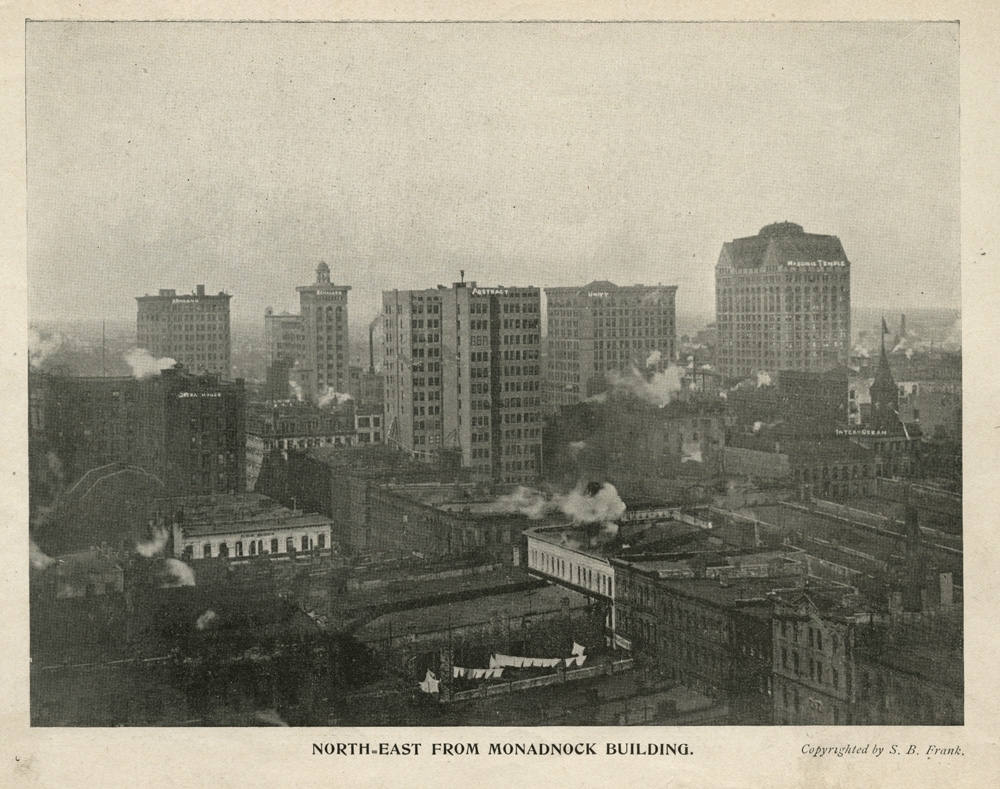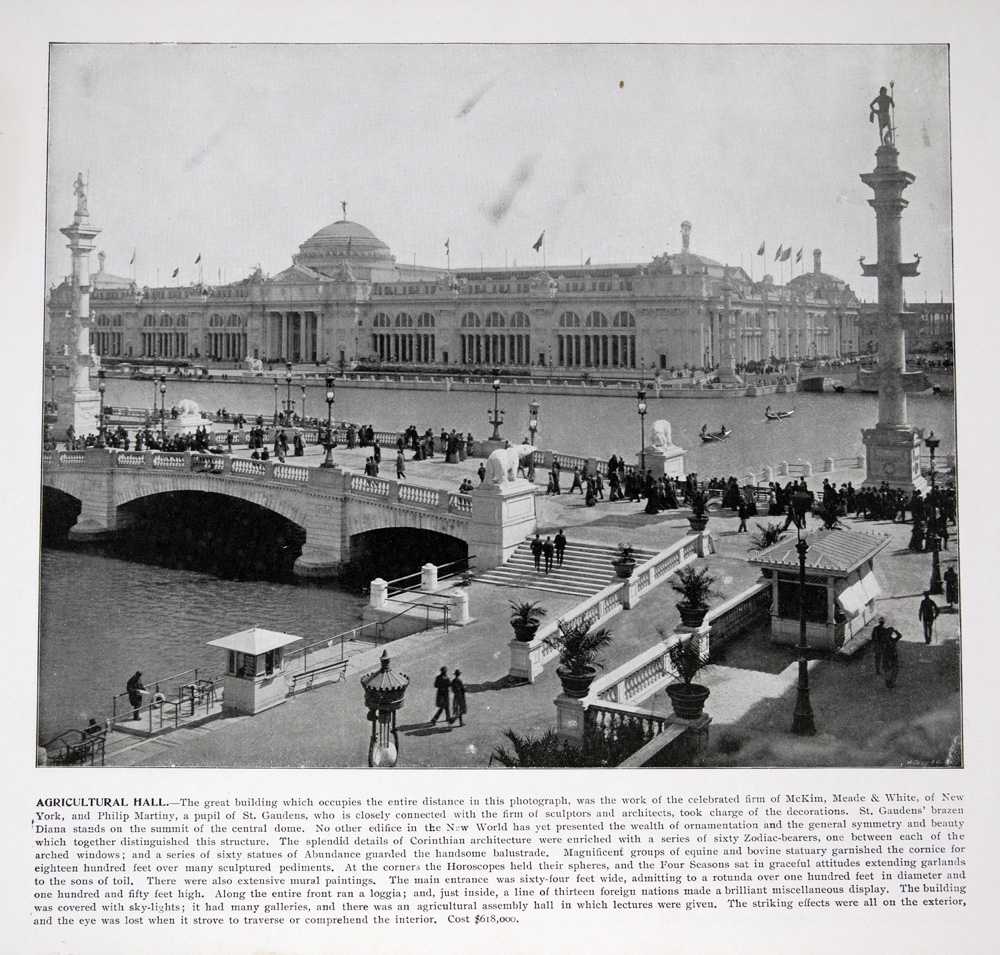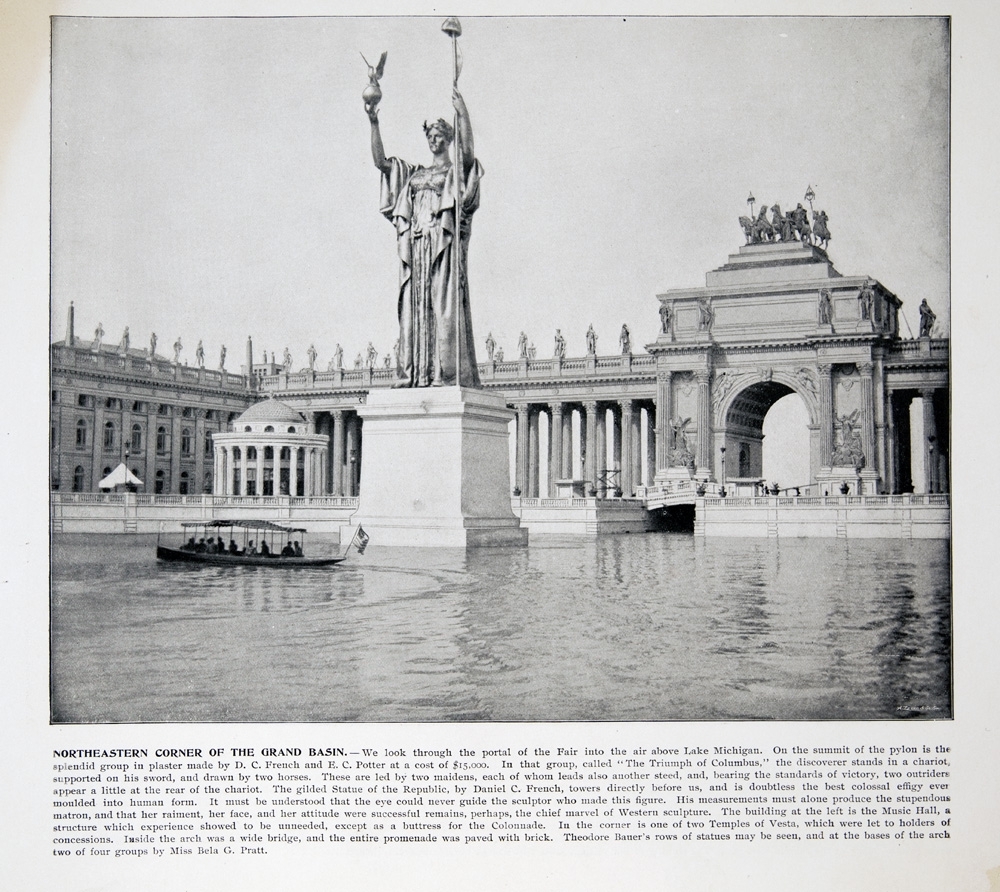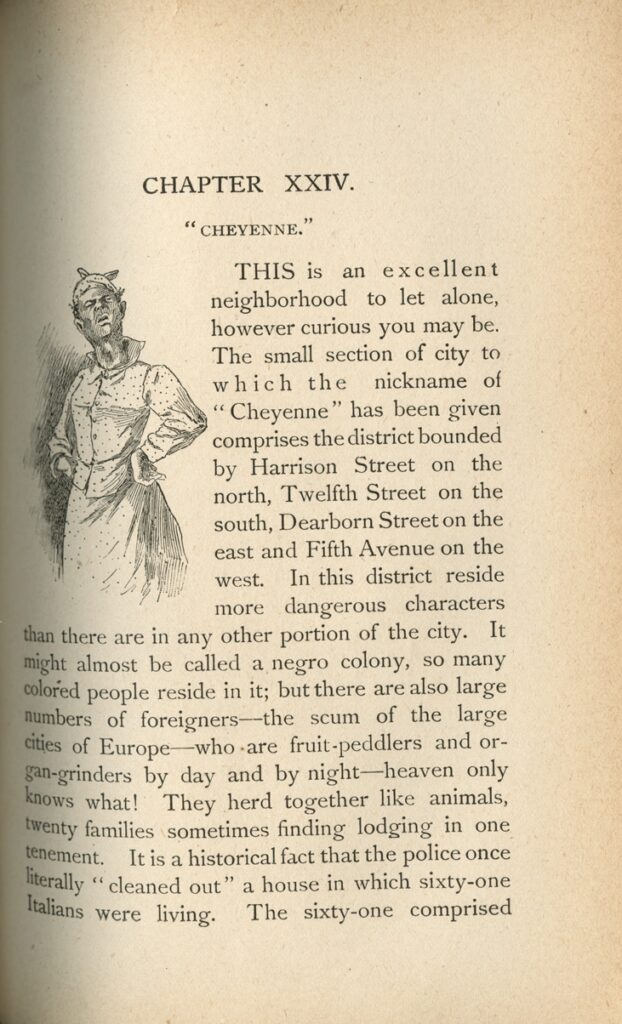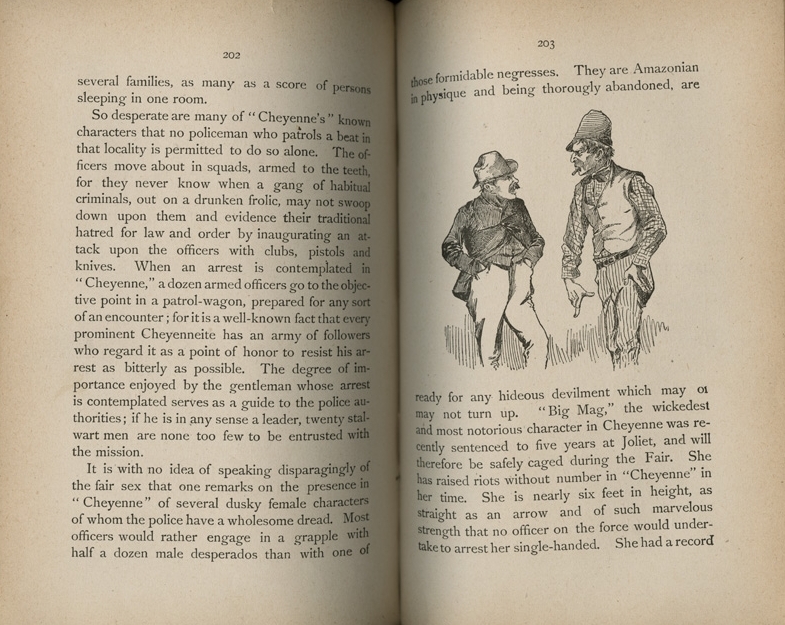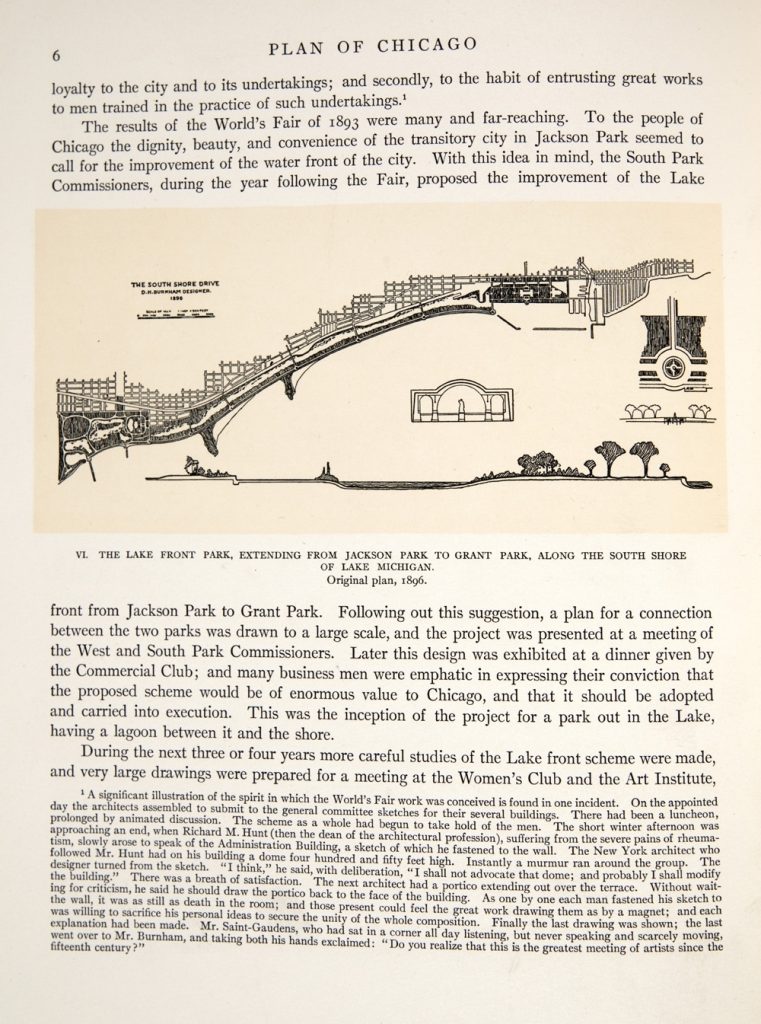Introduction
The World’s Columbian Exposition transformed the city of Chicago in 1893 and influenced the city’s development for decades to come. The Columbian Exposition, also known as the Chicago World’s Fair, was located in Jackson Park, at the current site of the Museum of Science and Industry and the Midway Plaisance. It drew an estimated 27 million visitors, 14 million from outside the United States, at a time when the population of Chicago was just over one million. The Columbian Exposition celebrated, one year late, the four hundredth anniversary of Christopher Columbus’ “discovery” of the Americas. Chicago competed with cities such as New York and St. Louis for the right to host the fair. Exposition planners wanted to showcase the nation, still coming to terms with the Civil War that had ended 28 years earlier. They also wanted to demonstrate Chicago’s international stature just 22 years after much of the city had been destroyed by fire. Daniel Burnham served as the fair’s lead architect and oversaw the design and planning of the fair’s main buildings. These massive, neoclassical structures came to be known, collectively, as the White City. Despite their imposing appearance, the buildings were made from wood frames wrapped in staff, a plaster mixture that created the illusion of stone. The White City stood for less than six months. The exposition closed in late October 1893 and, that winter, almost all of the buildings were destroyed by fire. The documents that follow present the history of the Columbian Exposition in relation to the history of Chicago.
Please keep the following questions in mind as you review the documents
- What is the ideal city expressed in the Columbian Exposition documents? What forms of artistic and civic culture would this city promote?
- How did the exposition physically transform Chicago, especially its lakefront and parks?
- How does the exposition portray Chicago, the United States, and the world?
- What was the exposition’s legacy for Chicago?
The Real City and the Dream City
These two collections of photographs were published a year apart and give a strong sense of the contrast between downtown Chicago in the 1890s and the White City of the Columbian Exposition.
Questions to Consider
- Compare downtown Chicago, in the first two photographs, to the White City, portrayed in the third and fourth photographs. What differences do you notice? Describe how you would feel in each of these settings.
- How would these very different forms of architecture and urban planning shape the experiences—and the behavior—of people who moved through them?
The Book of the Fair
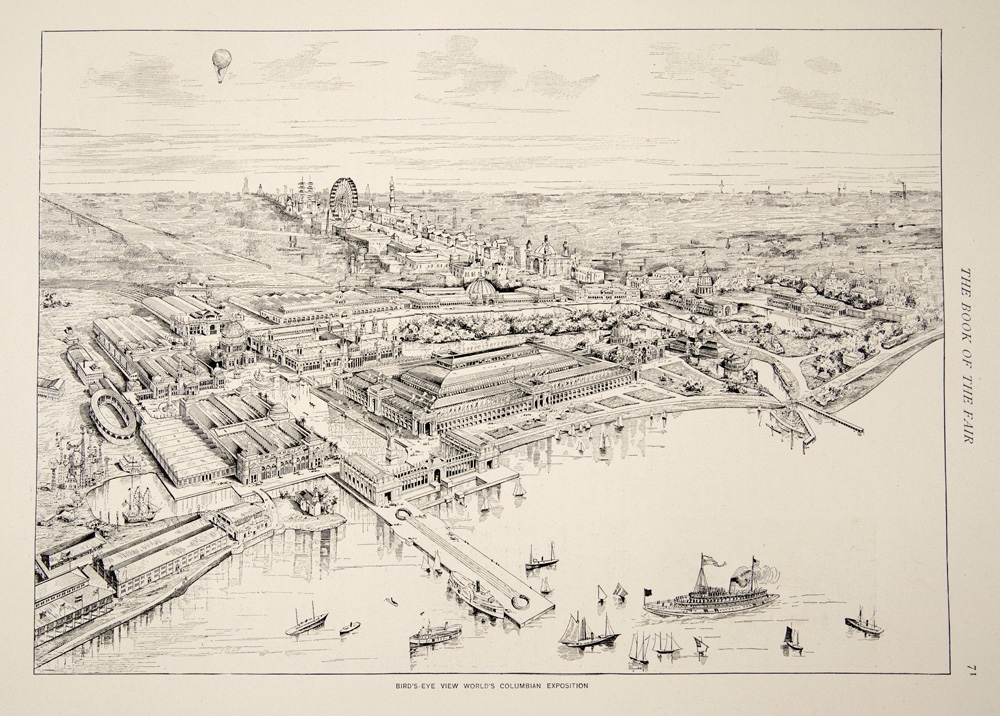
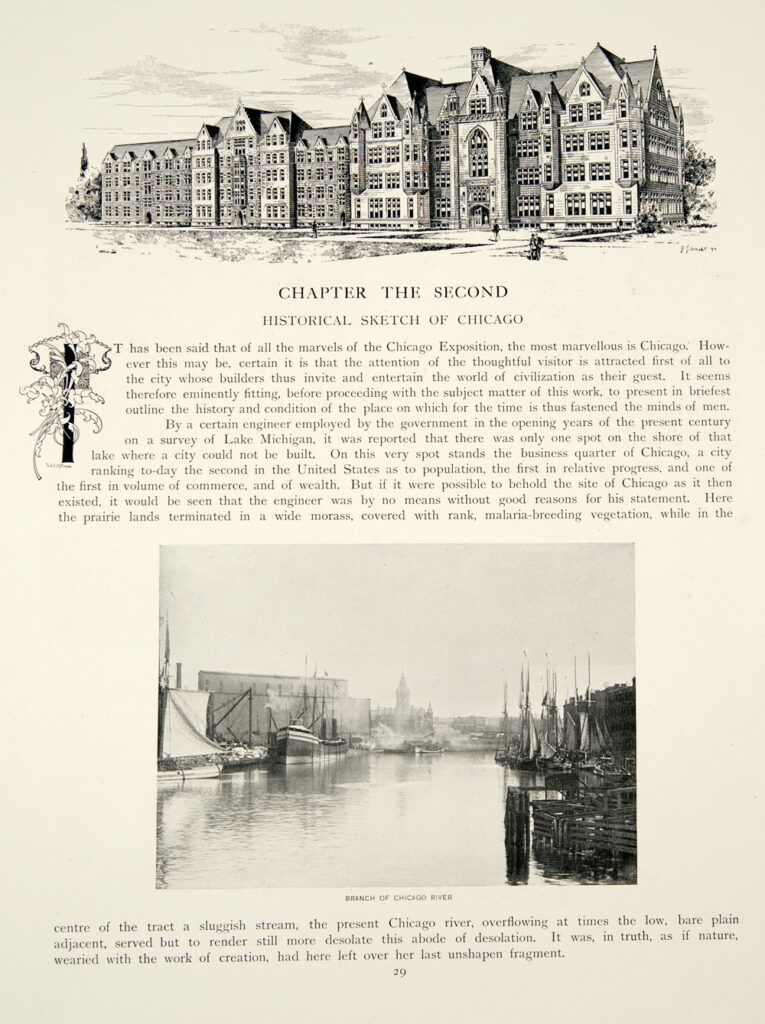
Hubert Howe Bancroft’s Book of the Fair offered a history of the conception and construction of the Columbian Exposition, accompanied by photographs as well as two volumes of gorgeous watercolors.
Questions to Consider
- How does the text describe Chicago as a physical location? Why do you think the author included this information in an account of the creation of the Columbian Exposition?
- Examine the engraved “bird’s-eye view” of the exposition. How does the exposition appear? What kinds of activities are represented in the illustration? How do these activities compare to people’s activities in the photographs of Chicago in Chicago … as Seen from the Skies, presented above?
The Map of the Fair
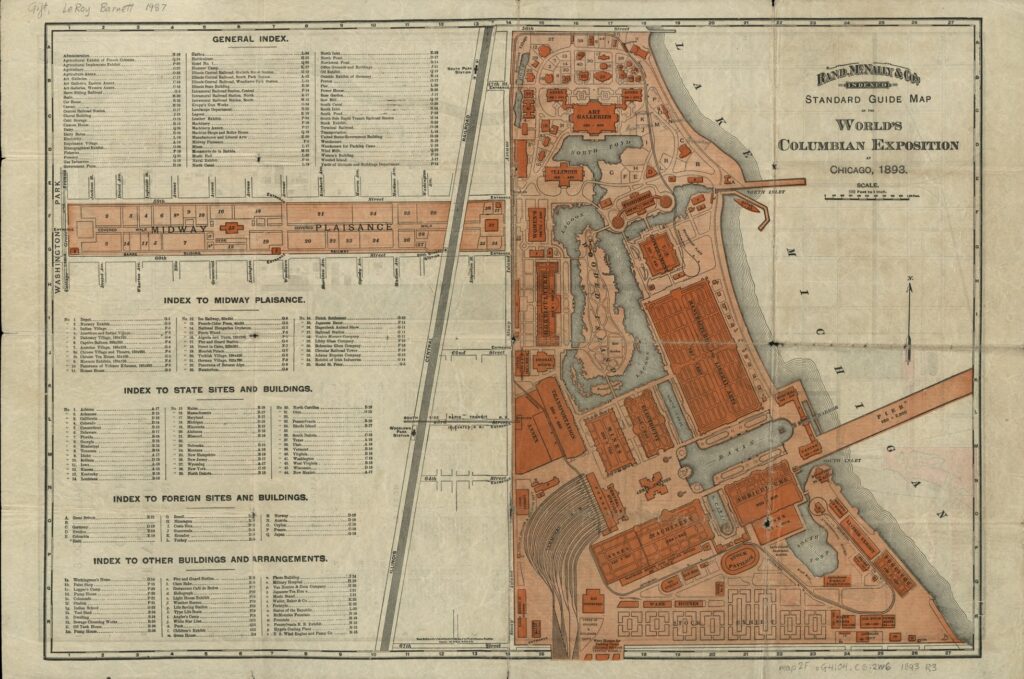
This guide map was sold to visitors at the fair. It includes an index of all of the exposition buildings as well as a detailed map of the grounds.
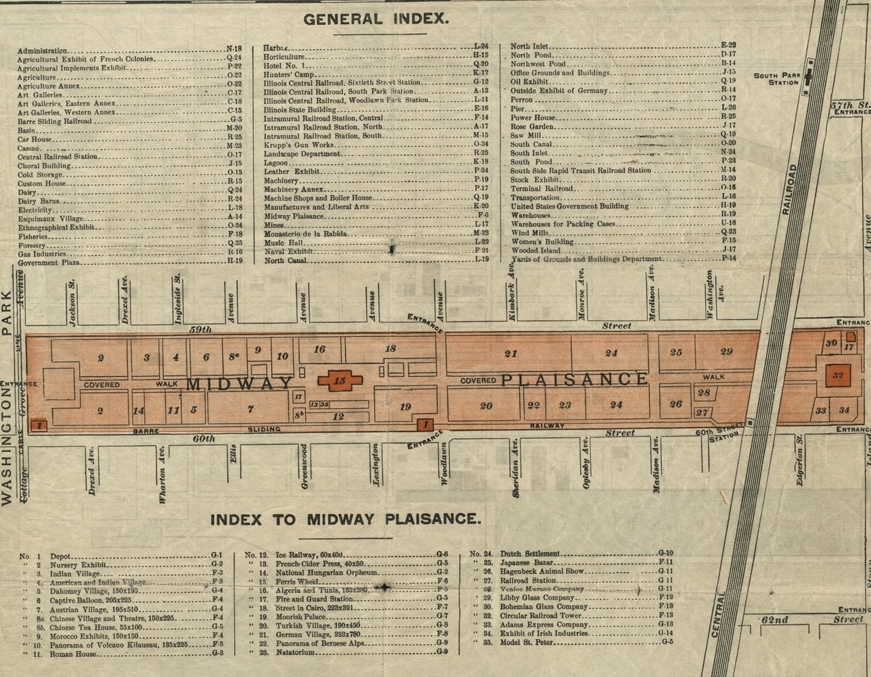
Questions to Consider
- How have the exposition planners incorporated water into their design? What do you think their goals were? How would the man-made lakes and lagoons, the accessible lakefront, and the free boat rides affect visitors’ experiences?
- Using the index (see detail) as well as the map, note the names of buildings in the White City. What do the buildings and their layout tell us about what the exposition planners wanted to showcase?
- Examine the index to the Midway Plaisance and identify the different cultures represented there. Moving from left to right, how are the Midway exhibits arranged? Why do you think they’re arranged this way? What beliefs about countries and cultures outside the United States does the arrangement of exhibits suggest?
The Midway Plaisance
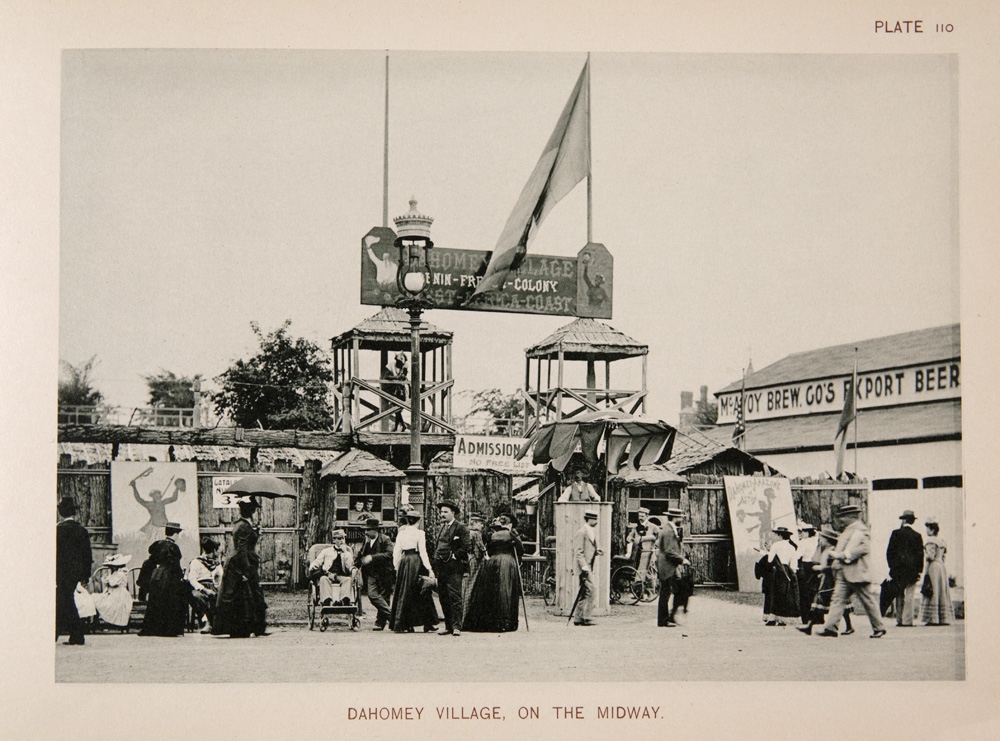

While the White City featured monumental buildings to exhibit the fine arts, industry, and agriculture, the Midway Plaisance took on a very different form and character. Exposition planners intended the Midway to be a site for entertainment, as well as education. For the Midway’s ethnographic exhibits, groups of people from around the world—Indonesia, West Africa, Germany—were brought to Chicago to be put on display in buildings designed to recreate their “native” villages. At the same time, the Midway became a prototype for the amusement park and included the first Ferris wheel as well as numerous shows and cafes.
Questions to Consider
- Describe these images from the Arabian and Dahomey exhibits. What do you think the organizers were trying to accomplish through their layout and design?
- What kind of experience did the Midway provide to fairgoers? What do you think the experience would have been like for the people on display in the exhibits?
Dangers of the City
This book, published anonymously the year before the Columbian Exposition, offers visitors a guide to the city’s amusements. It includes chapters on hotels and theaters, churches and panoramas, as well as “Perils and Pitfalls” and “Adventuresses.” These chapters warned about con men and women, pickpockets, and prostitutes. The chapter included here describes “Cheyenne,” purportedly Chicago’s roughest neighborhood.
Selection: Chicago by Day and Night: The Pleasure Seeker’s Guide to the Paris of America, 201-203 (1892).
Questions to Consider
- How does the author portray Chicago’s “most dangerous district”? Who lives there? What makes it so dangerous?
- How does this representation of African Americans and Europeans compare to the exposition’s portrayal of nonwhite and foreign people?
The Fair’s Legacy for Chicago
In 1909 the principal architect of the Columbian Exposition, Daniel Burnham, collaborated with Edward Bennett and the Commercial Club of Chicago on the Plan of Chicago. This ambitious document offered a comprehensive vision of what the city could become in the twentieth century. The Plan’s recommendations included the creation of the lakefront and neighborhood parks, the construction of Lake Shore Drive, and the widening of major streets. Much of the Plan would be realized over the next 50 years. In this passage, Burnham discusses the goals of the Plan and its relationship to the 1893 exposition.
Selection: Daniel H. Burnham and Edward H. Bennett, Plant of Chicago, 4, 6 (1909).
Questions to Consider
- What are the goals of the Plan of Chicago? How do Burnham and the other authors believe the city should develop? What were the primary considerations of the planners?
- Why does Burnham identify the Columbian Exposition as the “origin” of the Plan?
- What is the “spirit of the World’s Fair” according to the footnote on page six? What relevance does it have to the development of Chicago?
- Why do you think Burnham is concerned with “dignity” and “beauty” in a city that he describes as the “center of industry and traffic”? How will beautifying the city affect the people in the city?
Downtown Chicago and the Legacy of the Fair
The city of Chicago was changed irrevocably as a result of the 1893 World’s Columbian Exhibition, also known as the Chicago World’s fair. Below you can see photographs that show 1890s Chicago, as well as texts that alert visitors to the dangers of the city and offer thoughts on the legacies of the fair.
The Fair
Below you can see images, maps, and descriptions of different parts of the fair, including the so-called “White City,” which featured monumental architecture to exhibit the fine arts, industry and agriculture, and the Midway Plaisance, which featured ethnographic exhibits and the first Ferris wheel.
Further Reading
William Cronon. Nature’s Metropolis: Chicago and the Great West, 1991.
Donald L. Miller. City of the Century: The Epic of Chicago and the Making of America, 1996.
Erik Larson. Devil in the White City: Murder, Magic, and Madness at the Fair that Changed America, 2003.





